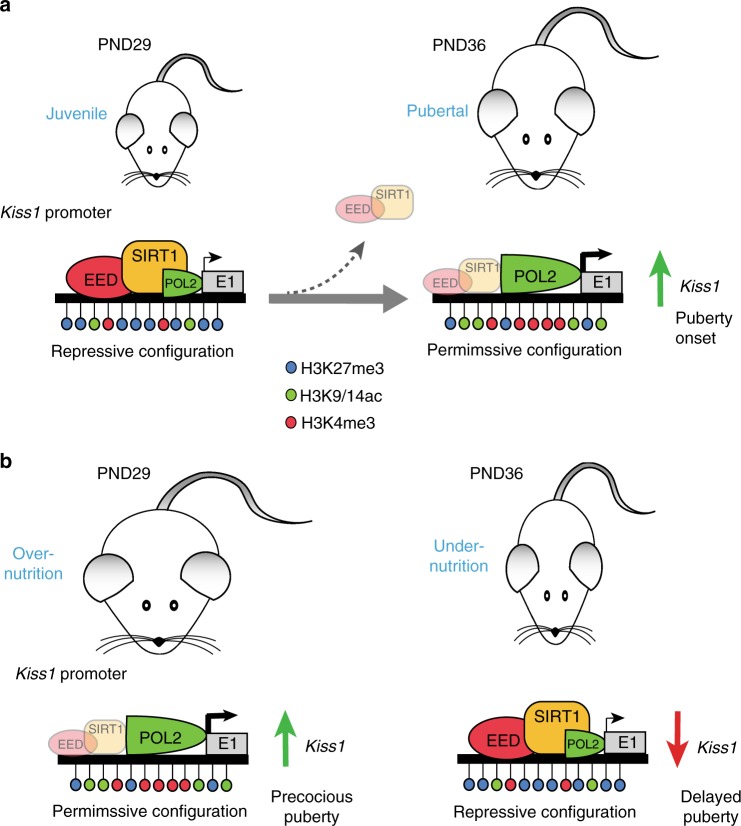Fig. 9.
Mode of SIRT1 action in the control of puberty and its modulation by metabolic cues. a Major events occurring during normal female pubertal maturation. Transition from late juvenile (PND29; left panel) to peripubertal (PND36; right panel) stages is defined by eviction of SIRT1 and EED, a key member of the PcG silencing complex, from the Kiss1 promoter in KNDy neurons, which changes the chromatin landscape from a predominantly repressive to a permissive histone configuration. According to this model, these changes would result in enhanced Kiss1 transcription, mandatory for puberty onset. b Predicted changes in Kiss1 transcriptional activity occurring under opposite nutritional conditions. In the left panel, early-onset obesity (caused by overnutrition) induces the premature eviction of SIRT1/EED from the Kiss1 promoter, and the rearrangement of histone configuration from repressive to permissive. This change, already evident by PND29, would allow enhancement of Kiss1 transcription, leading to precocious puberty. In contrast, prepubertal under-nutrition (right panel) prevents the eviction of SIRT1/EED from the Kiss1 promoter, which maintains a repressive histone configuration still at PND36. The model predicts that this protracted repression would lead to decreased Kiss1 transcription and delayed puberty

